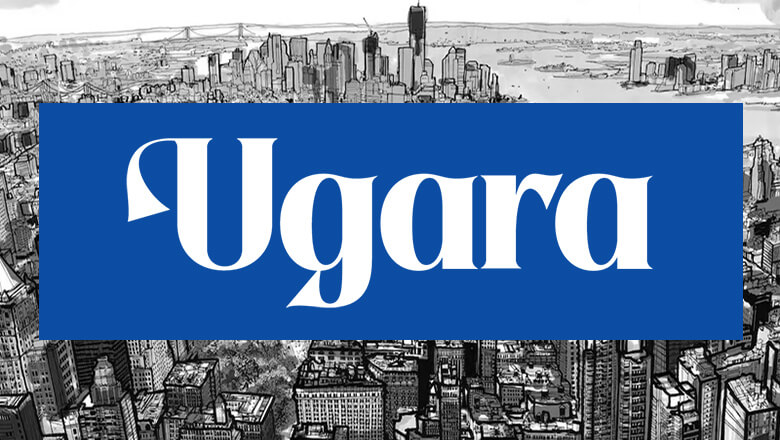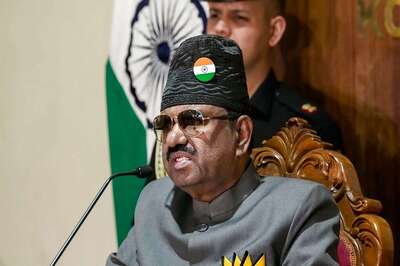Modi at National, Kejriwal in Capital: A Look at Delhi's Changing Voting-Pattern for 2 Key Elections

views
New Delhi: The Aam Aadmi Party (AAP) looked in a comfortable position to return to power in Delhi with a full majority, as per trends till 01:00 PM. According to the trends available on the Election Commission of India's (ECI) website, AAP was leading on 58 seats while the Bharatiya Janata Party (BJP) was ahead on the remaining 12.
As far as vote-share is concerned, the AAP looked on its way to reclaim nearly the same number of votes as it had secured in the 2015 elections. As per the ECI data, AAP had a vote-share of 53 per cent compared to about 54 per cent during the 2015 assembly, whereas BJP looked to have improved on its 2015 performance with a vote-share of 39 per cent.
However, BJP has lost a significant vote-share when compared with what it had received — 57 per cent — during the Lok Sabha elections last year when it secured all seven parliamentary seats.
Indeed, a look at past elections in Delhi, from 2013 – when AAP first contested polls in the capital – till 2019 shows that the electorate here has voted differently in local and national elections.
For instance, in December 2013, AAP made an impressive debut in the assembly polls when it secured 28 of the total 70 seats, collecting over 29 per cent of the total valid votes. The Bharatiya Janata Party (BJP), which was gearing up for the 2014 general elections with then Gujarat chief minister Narendra Modi campaigning for it since September, won 32 seats and nearly 34 per cent of the votes. The incumbent Congress was reduced to just eight seats and 25 per cent of votes, with even chief minister Sheila Dikshit losing to Kejriwal in the New Delhi constituency.
AAP formed the government with support from the Congress. The alliance lasted for just 49 days when Kejriwal resigned from the CM post, citing lack of support from other political parties to pass the anti-graft bill, an important poll promise of the fledgling party.
Buoyed by its success in the Delhi elections, AAP fielded candidates in over 400 parliamentary constituencies. Kejriwal himself left the capital to, unsuccessfully, contest from Varanasi against the BJP’s PM candidate Narendra Modi. Back in Delhi, much like the rest of the country, the BJP swept the Lok Sabha polls under Modi’s leadership, who was portrayed to be the only alternative to the Congress’s 10-year rule at the Centre.
During the 2014 general elections, the BJP gathered more than 46 per cent of the total valid votes and led in 60 of the 70 assembly segments in Delhi. AAP, which though improved its vote-share to 33 per cent, was ahead only in 10 assembly constituencies. Congress too bettered its vote-share to 15 per cent but did not take the pole position in any of the assembly segments.
The loss came as a setback for AAP. For the 2015 assembly elections, the party again went back to focus on local issues and asked for the mandate that it lacked in 2013 to fulfill its promises. The BJP, on the other hand, hoped to sail through the elections on the Modi wave, which had helped it win all the seven Lok Sabha seats in 2014.
But Delhi had another surprise up its sleeve.
AAP, this time, won a historic mandate of 67 seats. It secured more than 54 per cent of the total votes. The BJP could only manage to win three seats, even though it held on to 32 per cent of the votes, implying that AAP’s victory was driven majorly by a shift of the traditional Congress voters towards the fledgling party. The Congress won no seats and just 9.65 per cent of the votes.
Yet again in the 2017 municipal body elections, Delhi voters chose the BJP to continue running the three civic bodies. The saffron party collected over 36 per cent of the votes and 181 seats of the total 272. AAP secured 26 per cent of votes and just 48 seats.
In last year’s general elections, when the focus was more on national issues and electing the prime minister, Delhi again voted in favour of Narendra Modi and the BJP, which won all seven seats in the capital with a massive 57 per cent vote-share. The party led in 65 assembly constituencies in total. Given that the Congress was considered to be the main opposition to the BJP at the national level, the grand old party outperformed AAP in terms of vote-share. Congress gathered over 22 per cent of the votes compared to AAP’s 18 per cent, and led in the remaining five assembly constituencies.
AAP had hoped for this trend to continue. Its argument was that even in states like Maharashtra, Haryana, and Jharkhand, where the BJP won a landslide victory during the parliamentary polls, the saffron party lost significant ground to the opposition during the state elections. Even in Odisha, which voted for both general and assembly elections at the same time, the results seemed to validate the notion of different voting behaviour in local and national elections.


















Comments
0 comment